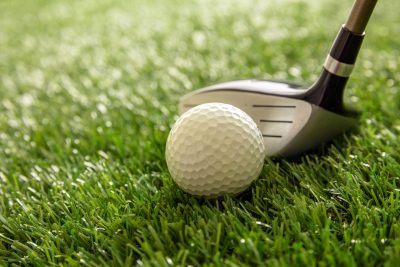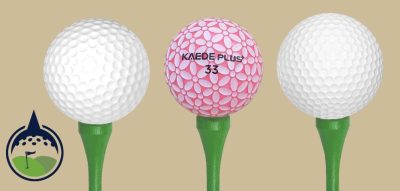Why Golf Balls Have Dimples (And Why You Should Care)
You might not think much about your golf ball beyond trying not to lose it in the woods, but have you ever stopped to wonder why it’s covered in dimples? Turns out, those tiny indentations aren’t just there for looks—they’re the reason your ball soars through the air instead of flopping 50 yards in front of you like a wounded duck.
 A Brief History of Golf Ball Dimples
A Brief History of Golf Ball Dimples
Believe it or not, golf balls weren’t always dimpled. The first ones were smooth, and players quickly realized that old, scuffed-up balls actually flew farther than brand-new ones. That little discovery led to the modern dimpled design, which helps reduce drag and increase lift. In short, dimples are the secret sauce that keeps your golf ball airborne.
How Many Dimples Does a Golf Ball Have?
The number of dimples on a golf ball varies by manufacturer and model, typically ranging from 300 to 500. The average ball sports around 336 dimples—because apparently, that’s the magic number for optimal flight. Some companies have even experimented with over 1,000 dimples, but let’s just say those didn’t exactly take off.
The Science Behind the Dimples
When you hit a golf ball, air moves around it. Without dimples, the air would create a big, turbulent wake behind the ball, slowing it down like a parachute. Dimples disturb the airflow just enough to create a thin layer of turbulence that clings to the ball’s surface, reducing drag and adding lift. This means your shots go farther and straighter—well, at least when you hit them right.
 How Dimples Affect Your Game
How Dimples Affect Your Game
Golf ball dimples influence:
- Lift & Drag – More dimples generally mean a softer, more controlled flight, while fewer dimples can reduce spin and maximize distance.
- Spin Rate – High-spin balls climb higher and stop faster on the green, while low-spin balls fly lower and roll farther.
- Wind Control – A well-designed dimple pattern helps the ball cut through the wind instead of being tossed around like a leaf in a storm.
Choosing the Right Dimple Pattern for Your Game
If you want to fine-tune your golf game, consider how your golf ball’s dimples impact performance:
- Need more control? Go for a ball with a higher dimple count.
- Want more distance? Pick a ball with fewer dimples for lower spin and a longer roll.
- Play in windy conditions? Look for a ball designed for wind stability.
What If Golf Balls Didn’t Have Dimples?
Imagine hitting a smooth golf ball—bad news. It would fly unpredictably, lose distance, and feel about as easy to control as a paper airplane in a hurricane. Even a pro golfer wouldn’t get more than half the usual distance. So next time you shank a drive, just be glad your ball has dimples—it could be worse.
Final Thoughts: Embrace the Dimples
Golf ball dimples might seem like a minor detail, but they’re one of the biggest reasons you can even pretend to have a decent golf game. Whether you’re looking for more control, better distance, or an excuse for why your last shot landed in the lake, understanding dimples can help. So next time you tee up, take a moment to appreciate those tiny little craters—they’re doing a lot more work than you think.



